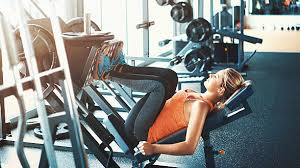
Back pain is one of the most common complaints we encounter in our chiropractic practice, and often, it stems from something as simple as posture. Whether you’re working at a desk, lifting at the gym, or doing chores around the house, poor posture can place excessive strain on your spine, leading to discomfort or even chronic pain.
But by understanding what good posture looks like in different scenarios and correcting bad habits, you can prevent or alleviate much of this pain.
In this blog, we’ll explore how posture affects your back in various settings—work, home, the gym, and even while caring for young children—and how certain repetitive movements like bending, lifting, and twisting can contribute to back pain.
Posture at Work: Desk Jobs and Long Hours
If you spend long hours sitting at a desk, poor posture is likely a significant contributor to your back pain. Slouching, leaning forward, or hunching your shoulders all place undue stress on your lower back, neck, and shoulders.
What Good Posture Looks Like at Work:
- Keep your feet flat on the floor or on a footrest.
- Your knees should be at or slightly below hip level.
- Sit back in your chair with your lower back supported.
- Keep your monitor at eye level to avoid hunching forward.
- Your arms should rest comfortably with elbows at a 90-degree angle.

Taking frequent breaks to stand, stretch, and walk around can relieve the stress placed on your spine from sitting too long. Incorporating lumbar support cushions can also help maintain the natural curve of your spine.
Posture at Home:
Lifting, Bending, and Household Chores
We often overlook how daily chores at home can negatively impact our posture and cause back pain. Whether you’re bending down to pick up laundry, lifting grocery bags, or vacuuming, poor techniques can lead to long-term problems.

What Good Posture Looks Like at Home:
- Lifting: Bend at the knees, not at the waist. Keep your back straight and engage your legs as you lift, holding the object close to your body.
- Bending: Always squat down with your knees to pick something up rather than rounding your back. This technique protects your spine.
- Vacuuming: Avoid overreaching or bending awkwardly. Walk with the vacuum instead of twisting your torso to reach distant areas.
By maintaining proper form in these simple movements, you can prevent unnecessary strain on your lower back and reduce the risk of injury.
Posture While Managing Young Kids
For mums managing young kids, posture becomes especially important. From carrying toddlers to bending down to pick up toys or cribs, repetitive movements and poor posture can contribute to chronic back pain. The constant lifting and carrying of young children places added strain on the lower back, shoulders, and neck.
What Good Posture Looks Like When Managing Young Kids:
- Carrying Your Child: Instead of always carrying your child on one hip (which places uneven pressure on your spine), switch sides frequently or hold them centered in front of your body. Engage your core and bend your knees when picking them up.
- Breastfeeding or Bottle Feeding: Whether breastfeeding or bottle feeding, ensure you are sitting in a supported, upright position. Use pillows to bring your baby closer to you, rather than hunching over to reach them.
- Pushing a Pram: When pushing a pram, stand tall and keep your shoulders relaxed, avoiding the tendency to lean forward or round your back.

Simple adjustments in how you hold, lift, and interact with your child can help reduce the strain on your back and shoulders. Additionally, taking time for self-care, such as regular stretching or chiropractic adjustments, can keep your spine in alignment even amidst the demands of parenting.
Posture at the Gym:
Strength Training and Cardio
What Good Posture Looks Like at the Gym:
- Strength Training: When performing exercises like squats or deadlifts, keep your spine neutral, shoulders back, and engage your core. Avoid rounding your lower back as this can lead to strain or injury.
- Cardio Machines: On a treadmill or elliptical, stand tall and avoid leaning forward or slumping over the handles. If cycling, ensure your seat is at the correct height to maintain a neutral spine position.

Remember that controlled, mindful movements are key. It’s always better to use a lighter weight with proper form than to lift too heavy and risk injuring your back.
Repetitive Movements:
Bending, Lifting, and Twisting
Repetitive motions, especially those that involve bending, lifting, or twisting, can gradually wear down your spine. For instance, repeatedly bending incorrectly can lead to muscle imbalances and disc issues, while twisting with poor posture often strains the lower back.

How Repetitive Movements Cause Back Pain:
- Bending: When done improperly over time, such as bending at the waist instead of the knees, you can overstretch ligaments or wear down spinal discs.
- Lifting: Lifting heavy objects without proper technique places stress on the spine, leading to muscle strains and, potentially, herniated discs.
- Twisting: Repeated twisting motions, especially with weight, can cause spinal misalignment and put strain on the lower back muscles.
Incorporating conscious, proper posture in repetitive movements—whether at home, work, or the gym—is crucial in preventing long-term back pain.
The Chiropractic Approach:
Correcting Posture to Alleviate Back Pain
We understand that back pain can be debilitating, affecting your work, daily activities, and even your ability to enjoy time with family. When it comes to back pain relief, chiropractic care focuses on addressing the root cause of discomfort, which often stems from poor posture or spinal misalignment. Here’s how chiropractic can help you manage your back pain:
Spinal Adjustments: Chiropractors realign the spine to reduce stress on muscles, ligaments, and nerves, helping relieve pain and improve posture. Over time, these adjustments restore the natural curves of the spine, minimising further injury.
Postural Assessments: A thorough examination identifies postural issues contributing to your back pain. This allows us to create a tailored treatment plan focused on correcting imbalances and reducing strain on your spine.
Ergonomic and Lifestyle Advice: Daily habits, like sitting or lifting incorrectly, often cause postural problems. We provide practical advice to incorporate better posture habits at work and home, helping prevent and alleviate back pain.
Addressing Muscle Imbalances: Poor posture can lead to tight and weak muscles. We use massage, facia release, and stretching to relieve muscle tension and restore balance, supporting long-term pain relief.
Prevention and Maintenance: After correcting posture and relieving pain, regular chiropractic checkups help maintain spinal health and minimise future back pain episodes, promoting ongoing well-being.
Take Control of Your Posture
for a Pain-Free Back
Back pain doesn’t have to be part of your daily routine. By recognizing how your posture and movements impact your spine, you can take control of your health. From improving your desk setup to correcting your form at the gym, while managing kids, or during household chores, these small adjustments can have a big impact on your overall well-being.
If you’re experiencing back pain or need help improving your posture, don’t hesitate to schedule a chiropractic consultation. We’re here to help you move through life pain-free, with a strong and aligned spine.

